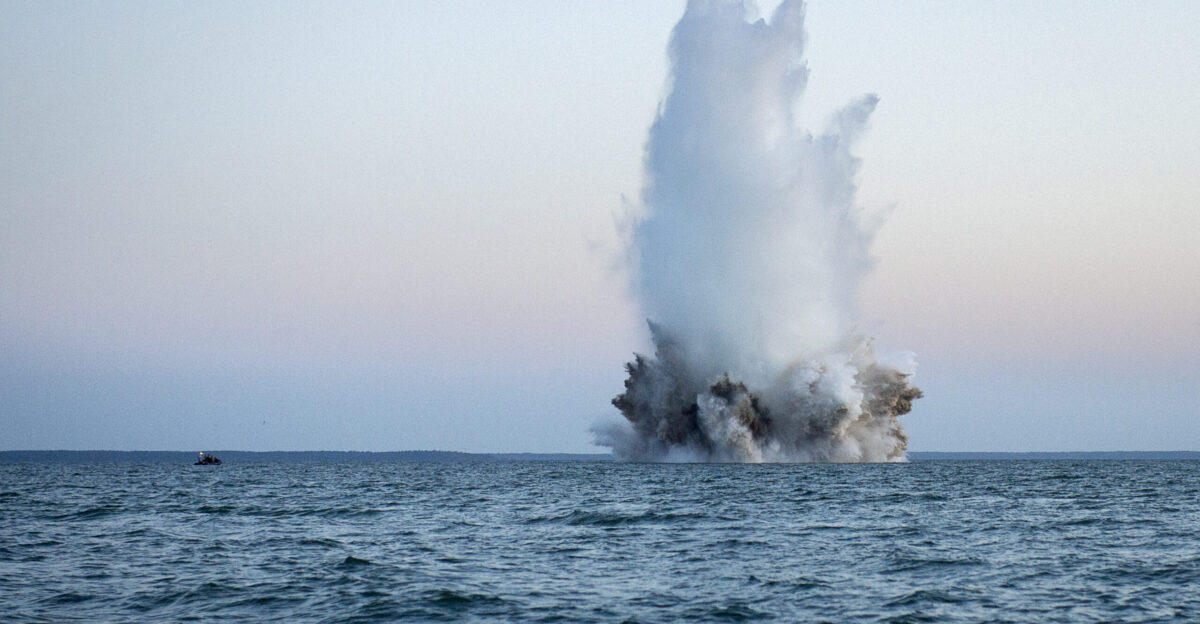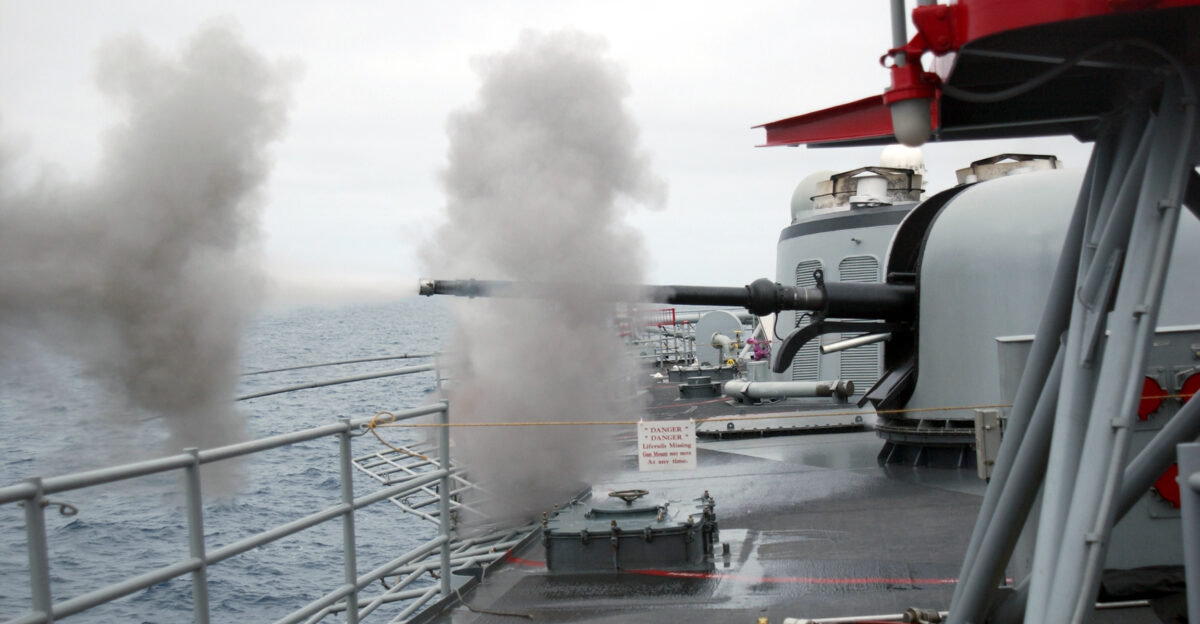
A torpedo test off the coast of northern Norway has captured global attention, offering a rare, unfiltered look at the destructive power of modern undersea weapons. In September 2025, during NATO’s Exercise Aegir 25, a Norwegian submarine fired a heavyweight torpedo at the retired frigate KNM Trondheim, producing dramatic footage that only surfaced publicly weeks later. The video, which quickly went viral, shows the frigate being blasted out of the water and sinking within moments—a vivid demonstration of naval firepower in action.
A Frigate Destroyed in a Single Strike

The most arresting moment in the released footage is the instant the torpedo detonates beneath the KNM Trondheim. The explosion lifts the ship’s hull clear of the sea before it breaks apart and sinks rapidly. NATO officials confirmed that the frigate was intentionally loaded with containers and equipment to better illustrate the torpedo’s impact during the controlled exercise. No crew were aboard, and the sinking was meticulously planned as part of the training scenario.
What sets this video apart from typical military demonstrations is the inclusion of internal camera angles. Cameras mounted inside the decommissioned ship captured the shockwaves as they tore through the vessel’s compartments, providing analysts with valuable data on how blast effects travel through modern hulls. For viewers, these scenes underscore how little warning a targeted ship might receive before disaster strikes.
Submarine Tactics and the Ula-Class Legacy

The torpedo was launched by the KNM Uthaug, a Ula-class diesel-electric submarine that has patrolled Norwegian waters since the early 1990s. Compact and quiet, Ula-class submarines are designed for stealth and agility in the shallow, complex coastal waters of Norway. Six boats in this class remain in service, undergoing life-extension upgrades as Norway awaits delivery of new Type 212CD submarines, expected to enter service around 2029.
NATO’s Allied Joint Force Command described the exercise as a demonstration of the “striking power” of both the weapon and the submarine, emphasizing the unique battlefield role of submarines. With their ability to operate covertly and strike unexpectedly, submarines are seen as critical assets for dictating the terms of naval engagements.
Testing in the High North: Strategic and Practical Lessons

Exercise Aegir 25 was more than a single torpedo test. It brought together naval units from Norway, the United Kingdom, and Poland to practice operating in the challenging Arctic environment off Andøy. The torpedo strike capped a series of live-fire drills, including missile launches by allied ships. Norwegian officials stressed that the exercise was routine, with safety zones established and environmental monitoring in place.
The choice of Norway’s northern waters as a testing ground is a strategic one. The High North is a vital corridor for both Russian and allied submarines, facilitating movement between the Atlantic and Arctic. Exercises like Aegir 25 build on previous drills, such as Nordic Response 2024, where NATO allies rehearsed defending sea lanes and reinforcing northern Europe under harsh conditions.
The Mechanics and Message of Modern Torpedoes
Defense experts explain that heavyweight torpedoes are engineered to detonate beneath a ship’s keel, creating a gas bubble that violently lifts and then drops the hull. This under-keel blast method is designed to break a ship’s back, often sinking large surface combatants with a single, well-placed shot—especially if they lack advanced torpedo defenses. The Trondheim video provides a rare, real-world example of this effect, which is typically observed only in classified testing.
Using a retired frigate as a target is standard practice for navies seeking to understand how real ships respond to modern weapons. Decommissioned vessels provide more accurate data than purpose-built targets, revealing how hulls and internal structures withstand—or fail under—extreme stress. In this case, the containers loaded aboard the Trondheim helped simulate the weight and compartmentalization of an active warship.
Implications for Naval Security and Public Debate
The viral spread of the torpedo test footage has sparked renewed discussion about naval vulnerability in the age of advanced undersea weapons. Maritime analysts note that the video starkly illustrates a long-understood reality: even large, modern warships are at risk if they cannot detect and counter an approaching submarine. As European navies face aging fleets and limited anti-submarine capabilities, exercises like Aegir 25 serve as a timely reminder of the need for vigilance and modernization.
In Norway, public reaction has focused on the use of decommissioned frigates as live-fire targets. While some question whether sinking former warships is the most effective use of resources, naval officials argue that such tests yield data that is unattainable through simulation alone. The debate reflects broader concerns about fleet renewal and defense spending in a strategically important yet relatively small navy.
A Glimpse Into the Future of Undersea Warfare

For most, submarine operations remain shrouded in secrecy, far from public view. The KNM Uthaug’s torpedo strike against the KNM Trondheim has briefly lifted that veil, providing both allies and potential adversaries with a clear demonstration of modern naval firepower. As NATO continues to adapt to evolving threats in the Arctic and beyond, the lessons from Exercise Aegir 25 will inform future tactics, training, and investments—shaping the balance of power beneath the waves for years to come.